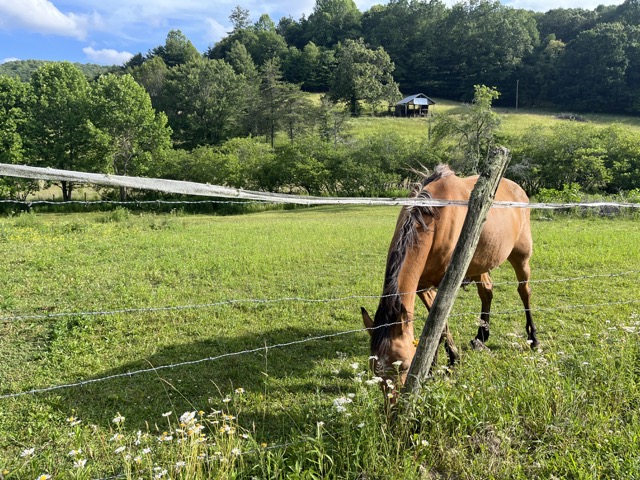Suches It Was - Blog
Fences and Farms 2023

Often when I am out hiking or riding along a dirt road in the truck, I am drawn to the beauty of a fence that cuts across the valley. Mountain fences, like all of those created anywhere in the country, served and continue to serve a variety of purposes – from keeping livestock in and predators out, to creating property lines and creating a sense of order in the wild untamed landscape. As all things change, so it is with the materials used to create them. In the early days of Suches, fences were often made from logs, stacked one on top of the other. Log fences were affective, and even attractive, but time consuming to construct. Split rail fences as well as stone fences saw their time, but in more recent decades wire fences have become the norm.
While I realize their practical function, both then and now, I am drawn to the art like shapes the lichen grow into on the wood posts and the stripes of flowers the plants create at the base of the wires. I enjoy pausing to watch the animals graze and reach through for the grass that is always greener on the other side.
The work of farm life is hard and relentless, but when it is a sunny day and the animals are out moving at their slow-and-steady-wins-the-race pace, I am jealous and apt to stop and take in the peaceful view. The fences do not have a life, but they do draw a line and pull your eyes across the valley, up the mountains in the distance and on this day, up to the beautiful blue sky, and they are a large part of farm life.
These mountain images align perfectly with the opinion of Wendell Barry lines in his book, “Bringing it to the table: On Farming and Food”
“Why do farmers farm, given their economic adversities on top of the many frustrations and difficulties normal to farming? And always the answer is: "Love. They must do it for love." Farmers farm for the love of farming. They love to watch and nurture the growth of plants. They love to live in the presence of animals. They love to work outdoors. They love the weather, maybe even when it is making them miserable. They love to live where they work and to work where they live. If the scale of their farming is small enough, they like to work in the company of their children and with the help of their children. They love the measure of independence that farm life can still provide. I have an idea that a lot of farmers have gone to a lot of trouble merely to be self-employed to live at least a part of their lives without a boss.”
